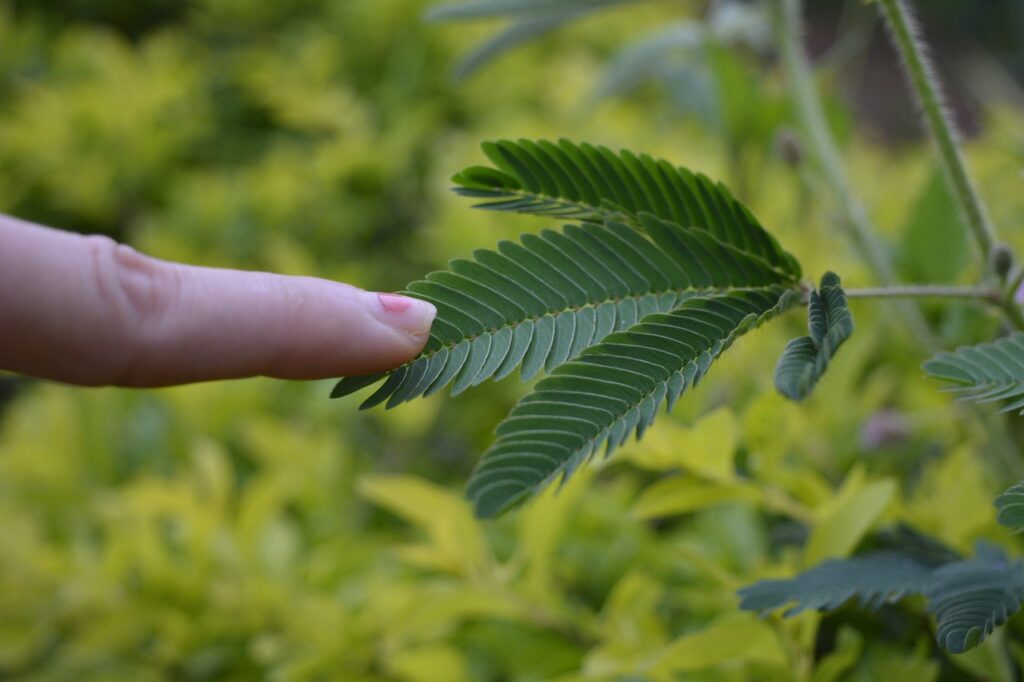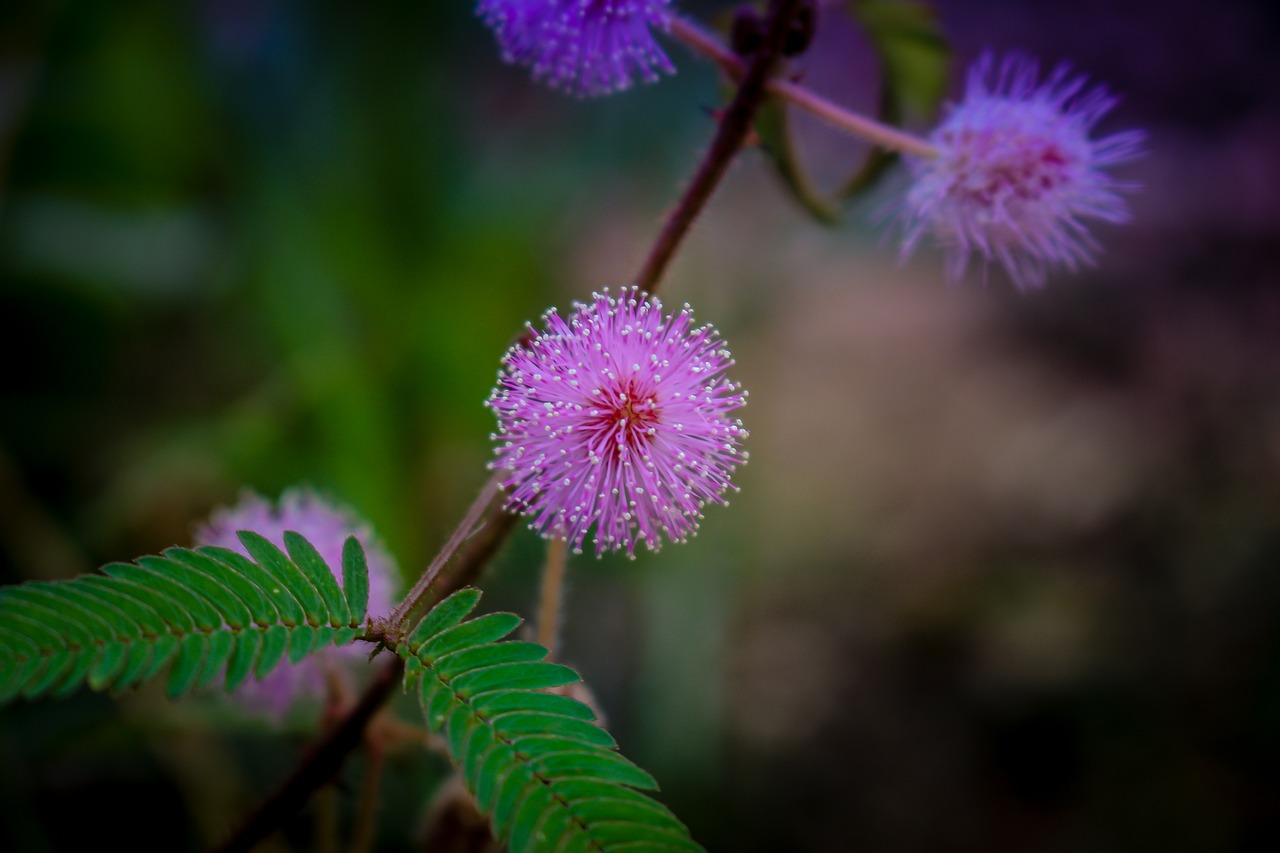The touch-me-not, also called the shame plant belongs to the pea/legume family. Scientifically, it is known as Mimosa pudica. We might have encountered this plant at least once in our lifetime. It is known for its typical response to touch. Why does it not like to be touched? Read till the end.
Called by several different names, including sleepy plant, shame plant or sensitive plant, it is typically found in South and Central America. With pink flowers in a bright green leaf background, this plant is a treat to the eye. We can’t resist to touch and enjoy the beauty of the plant. But, what happens if we touch the plant?
Interesting response to touch

Upon touching the plant, the fern-like leaves of the plant fold inward and droop. This phenomenon is called thigmonasty.
Interestingly, this plant is an example of Biomimicry. A lot of scientists drew inspiration from this plant to develop a tiny robot that can mimic the plant’s leaves and stems. They have a range of applications including healthcare and transport.
Why are they shy?
The phenomenon of thigmonasty acts as a defense mechanism against herbivores. It makes the plant look less attractive and less accessible, thereby prevent being eaten up by animals. They not only respond to touch but also light. The leaves droop when it is dark and open back up again when it is bright.
Let’s dive deep into thigmonasty
The touch-me-not plant has tiny hairy structures on the surface of the leaf which helps detect external stimuli. The structure of the leaf is important in this entire phenomenon. The thick base of the leaf stalk of this plant is called pulvini and the leaves act as joints of the plant allowing the leaves to droop.
Before touching the plant, a specialised group of cells secrete a fluid into the cell wall of the plant. The force exerted by this fluid is called the turgor pressure. This makes the plant stiff and rigid. Once it detects an external stimulus, the turgor pressure decreases, and the leaves droop.
Why the rapid change when turgor pressure is decreased?
It is due to potassium and chloride ions. Upon external stimulation, the ions move out of the cell through an ion channel. This increases the ion concentration outside the cell. To balance this out, water moves out of the cell through a selective channel called the aquaporin rapidly decreasing the turgor pressure resulting in the drooping action.
The aquaporins are what makes the touch-me-not plant very unique. They allow the rapid movement of water (2 seconds) without the movement of other ions.
So, the next time you step onto a touch-me-not plant, you know it sets this train of chain reactions, all within 2 seconds.
Benefits beyond their shyness
Despite their shyness, they are medicinal plants. They exhibit a range of medicinal properties :
- Anti-inflammatory property
- Antimicrobial (anti-bacterial and anti-fungal)
- Wound healing
- They promote skin health by fighting against bacteria and fungi that cause skin rashes
- They protect nerve cells from oxidative stress due to their antioxidant properties
In addition to the medicinal benefits, they also help the environment through soil enrichment and erosion control.
What interesting plant do you want to read about next?

